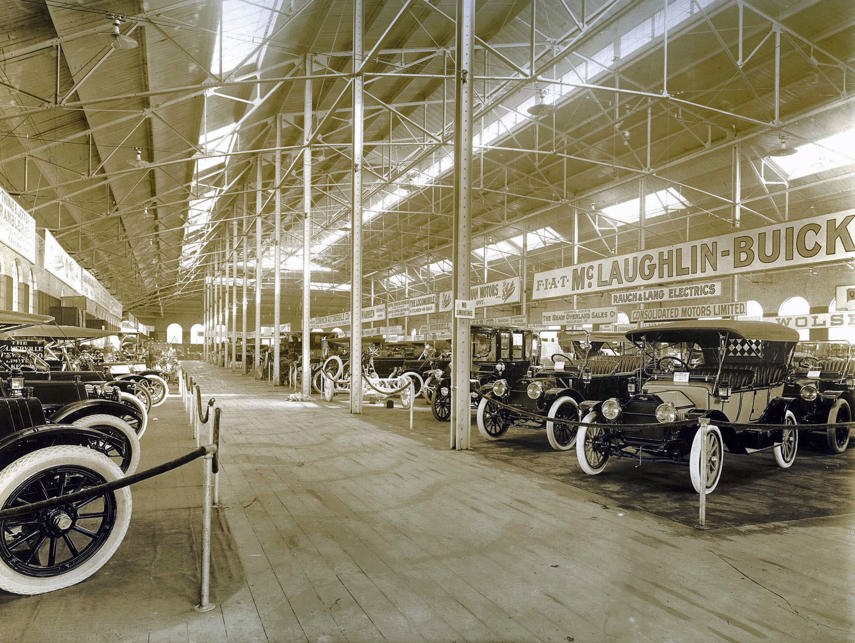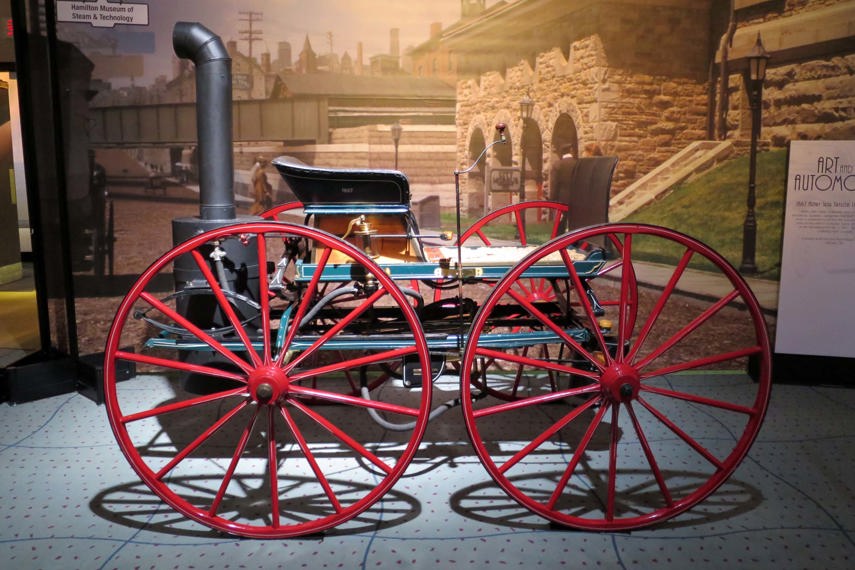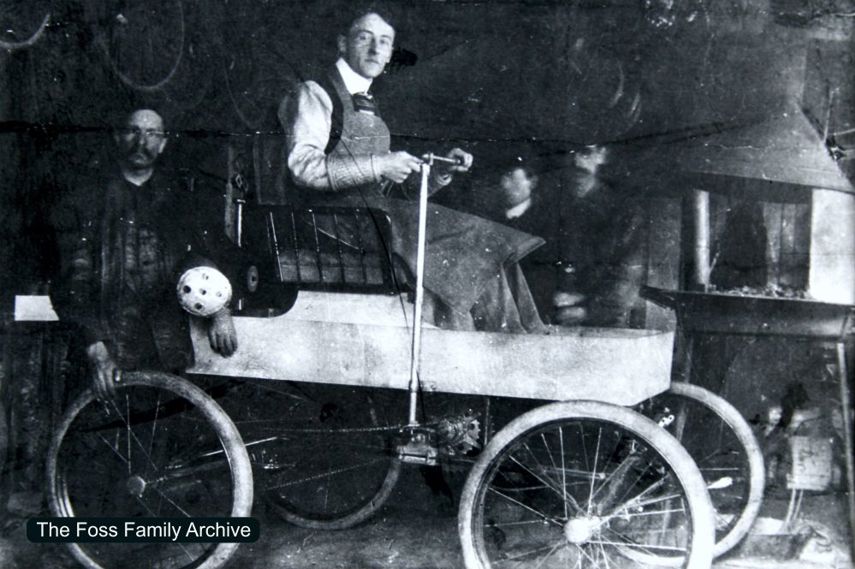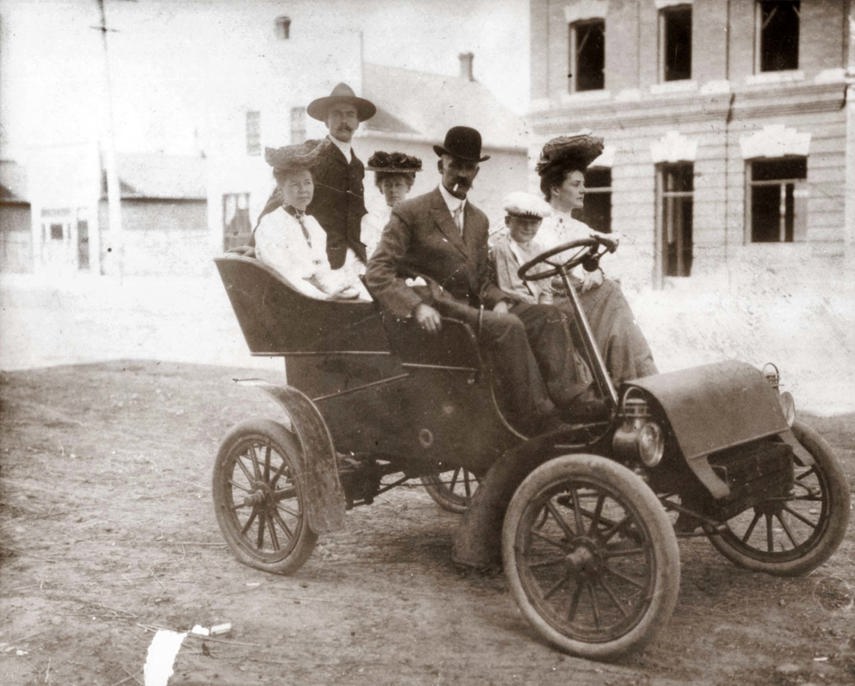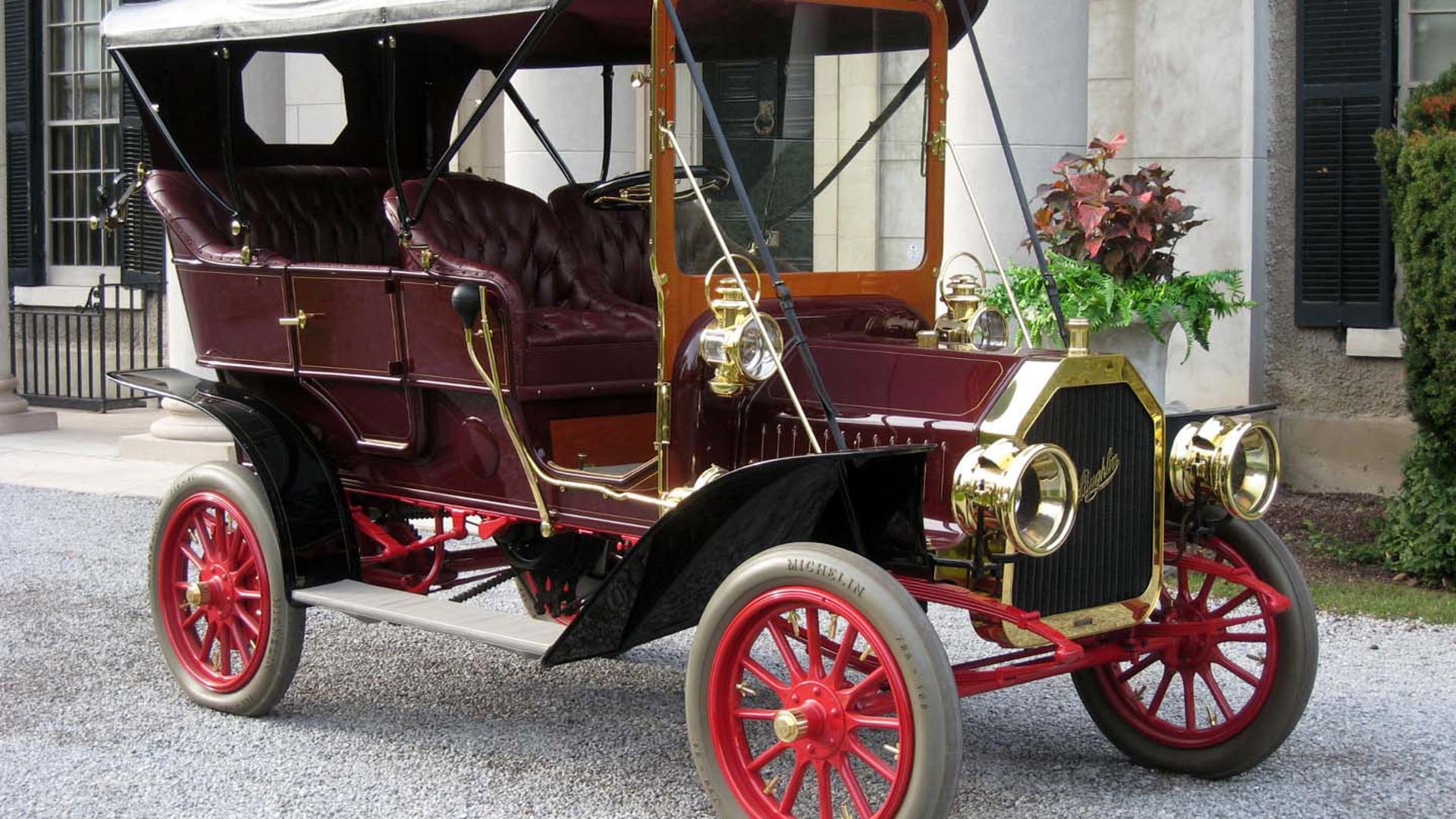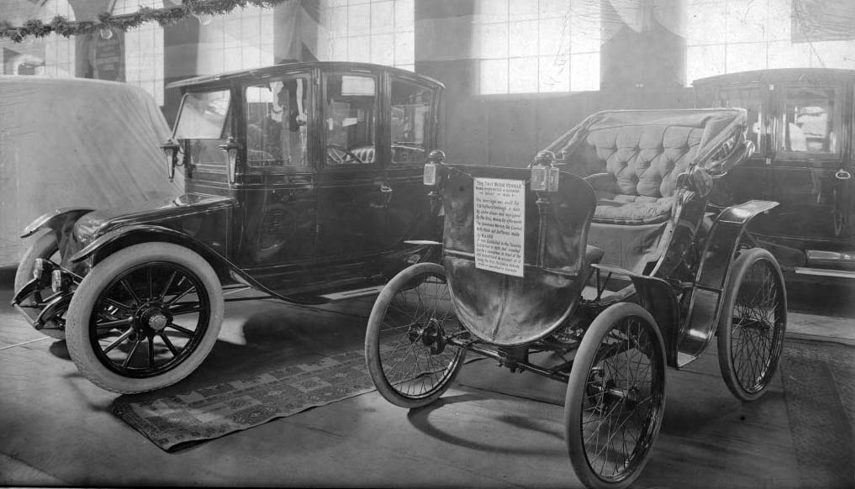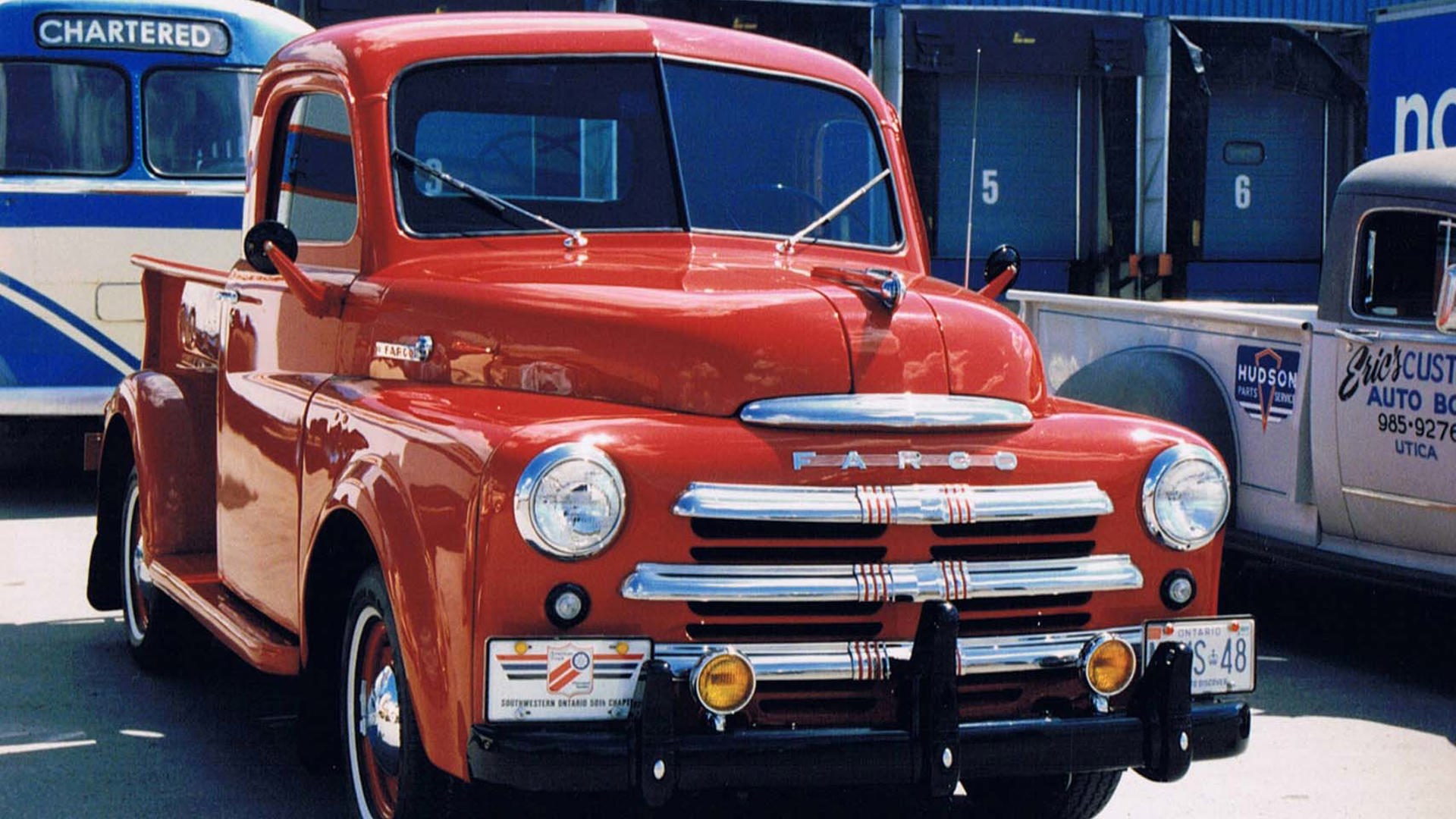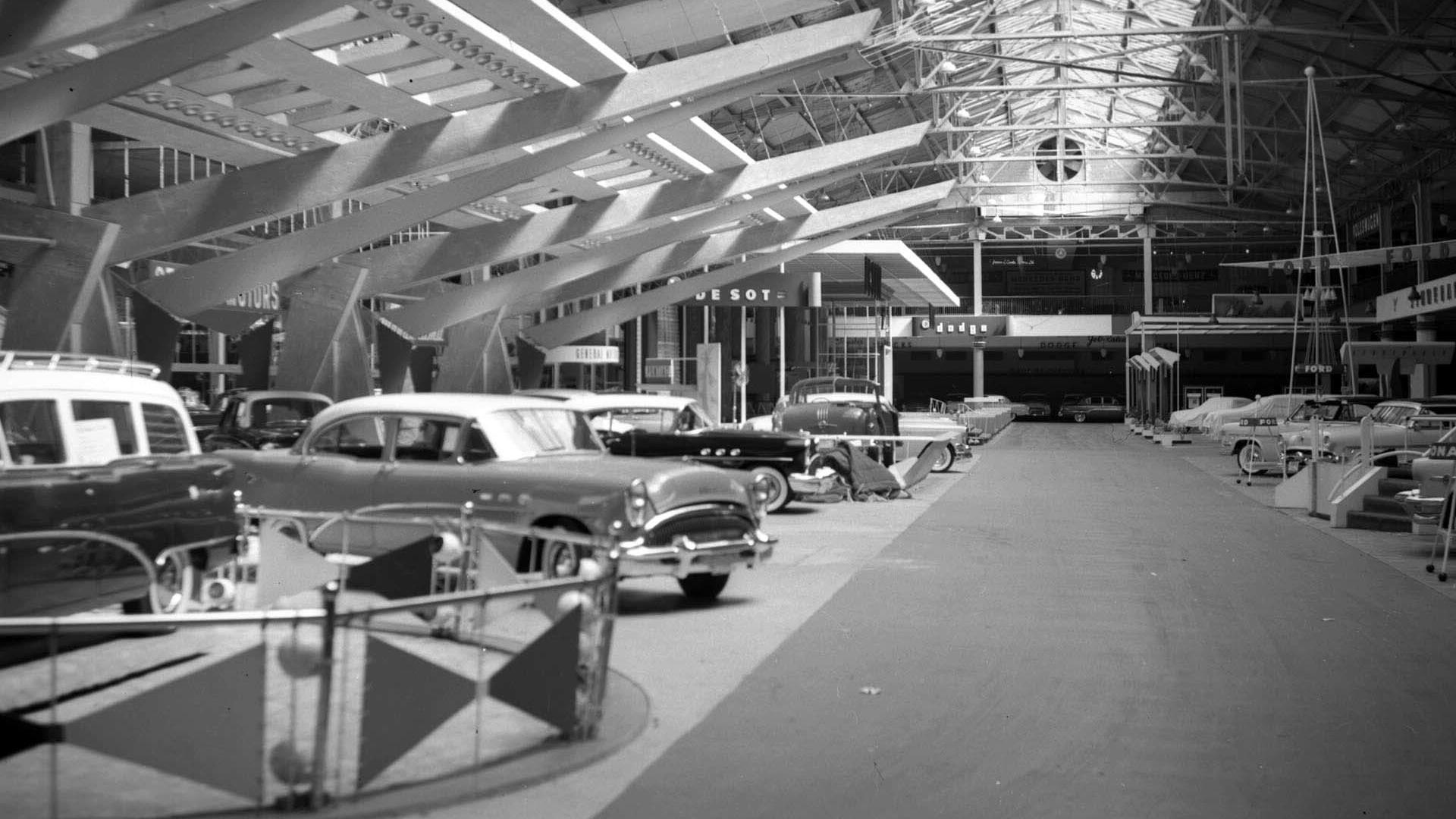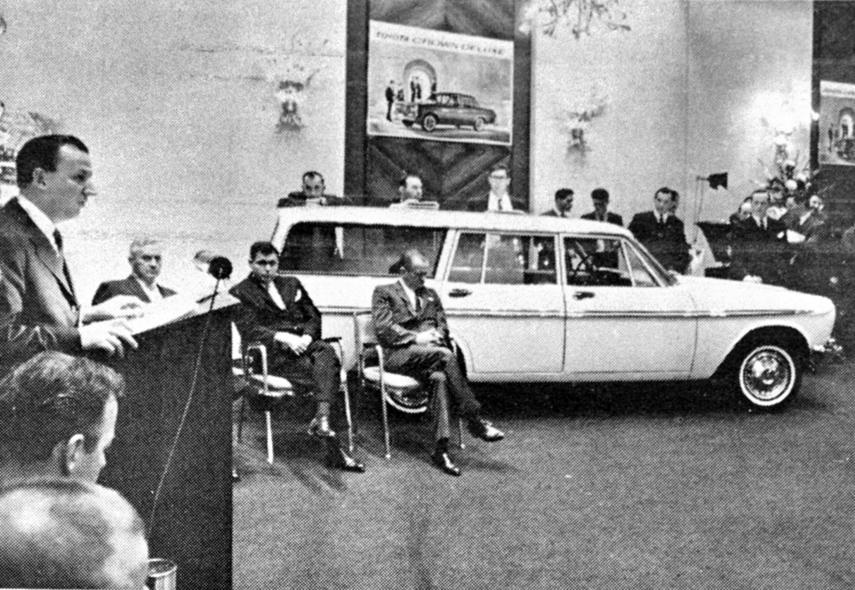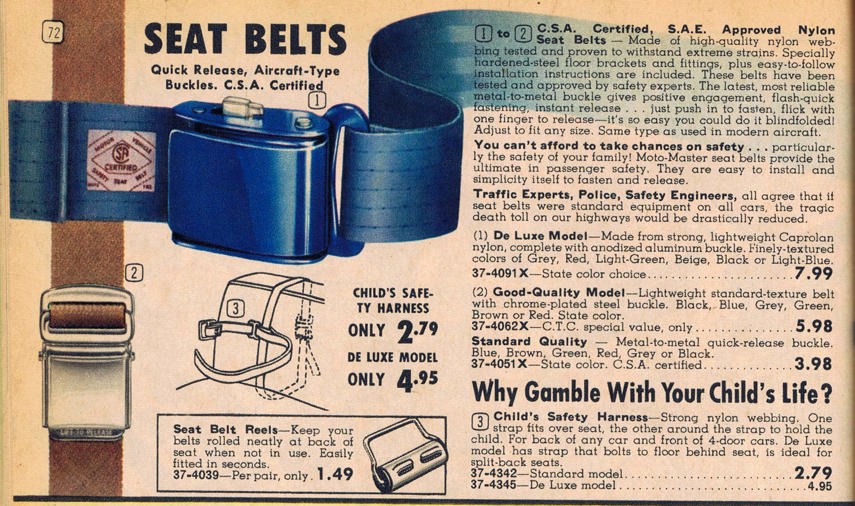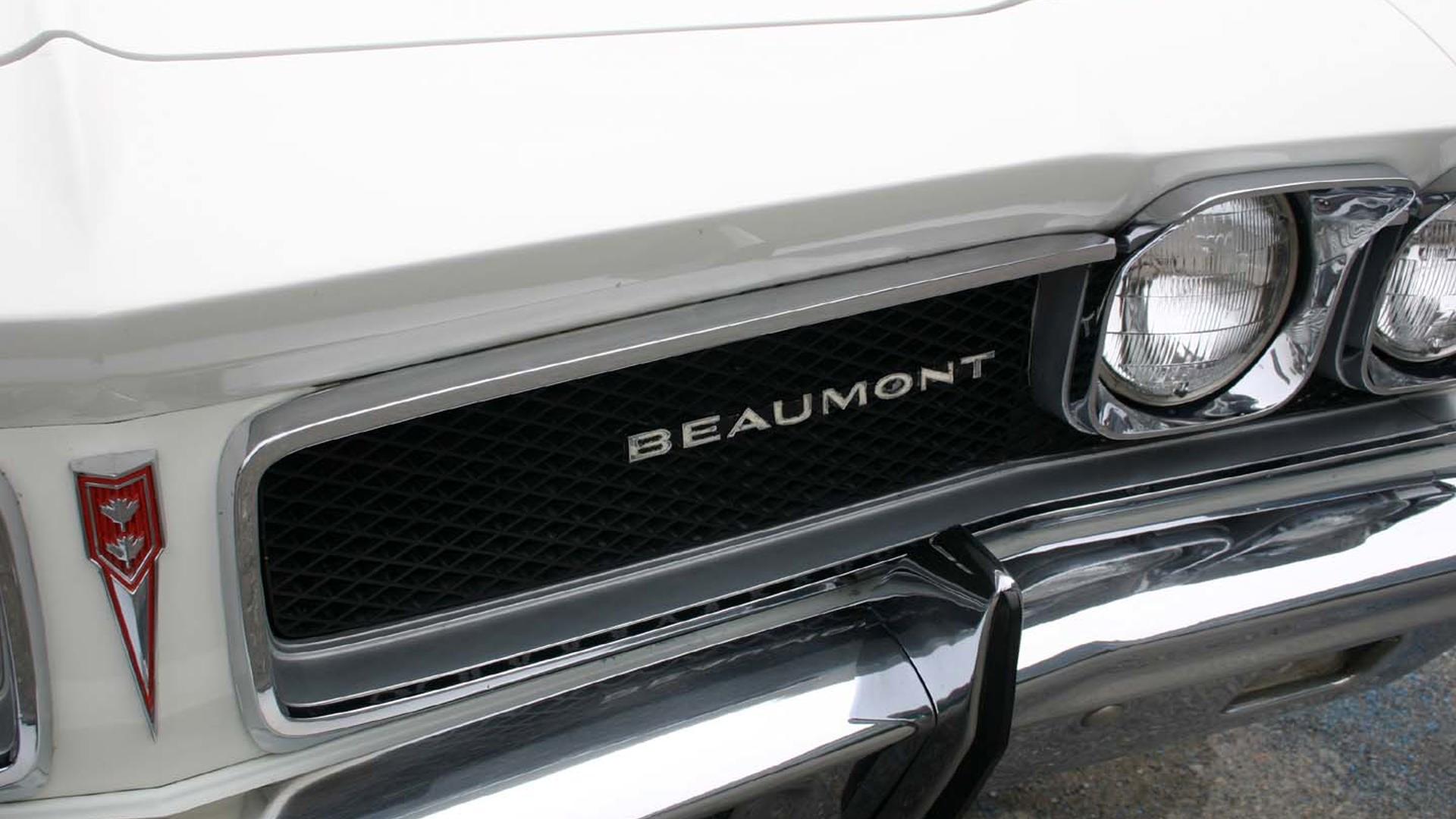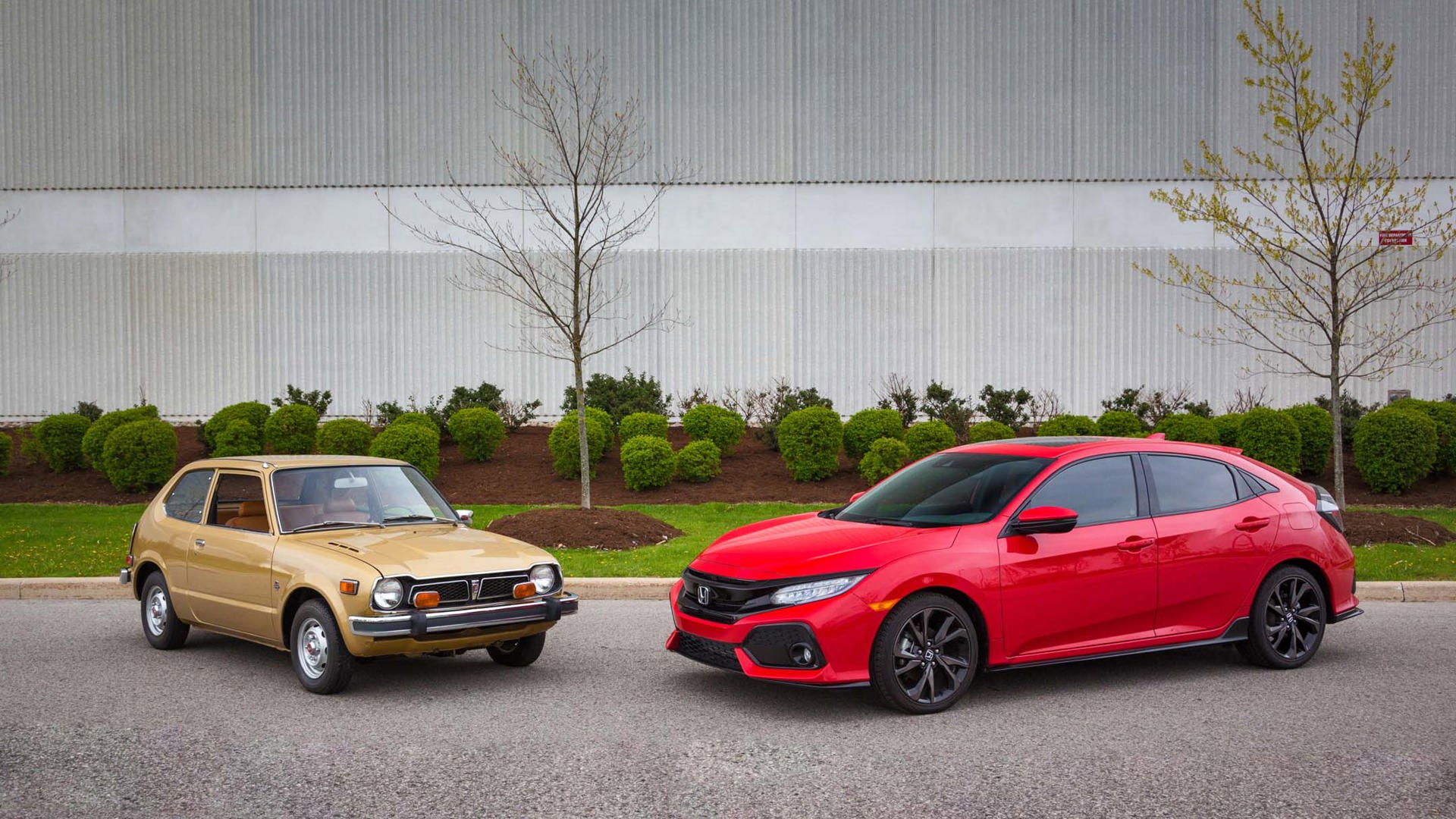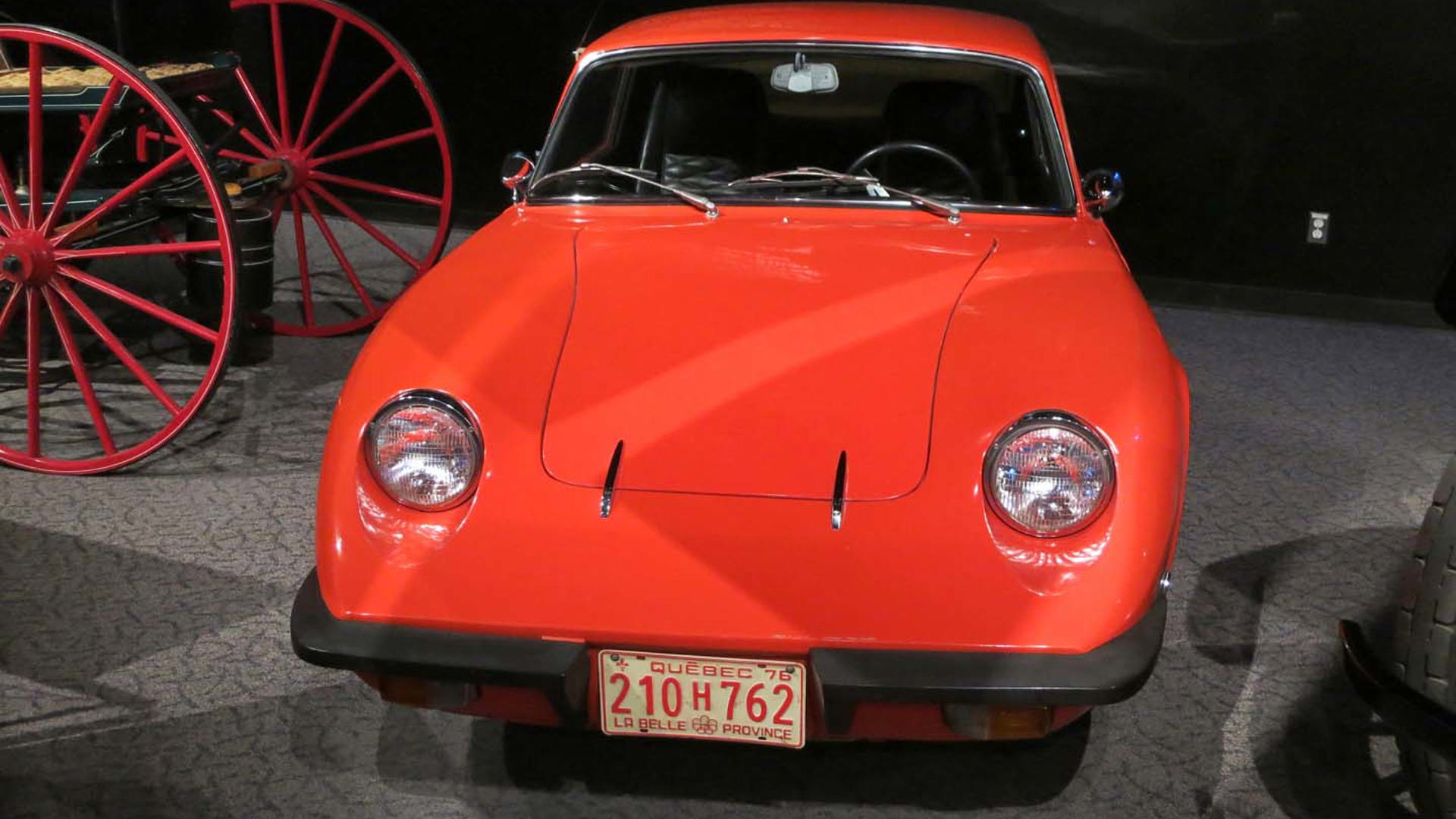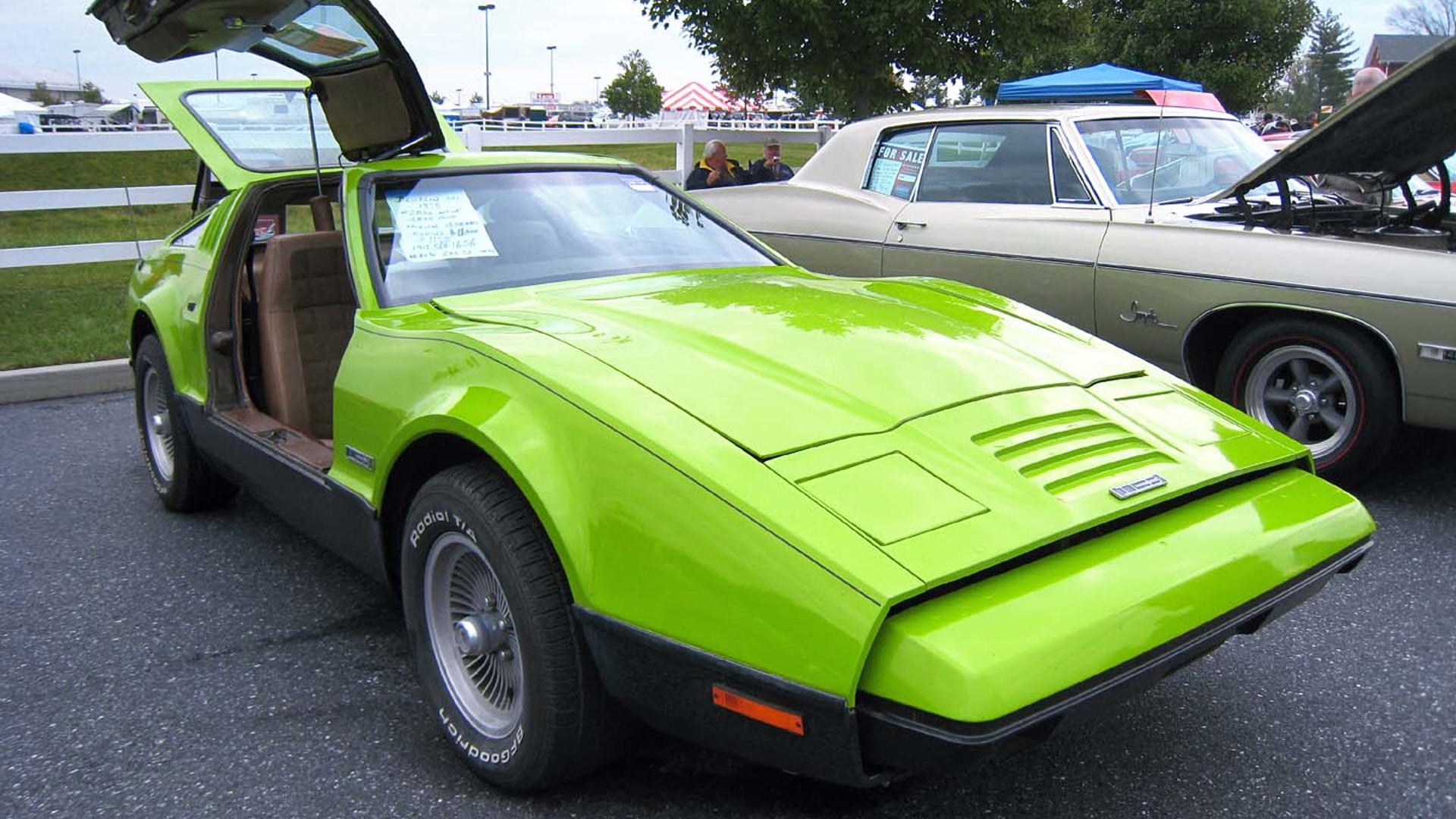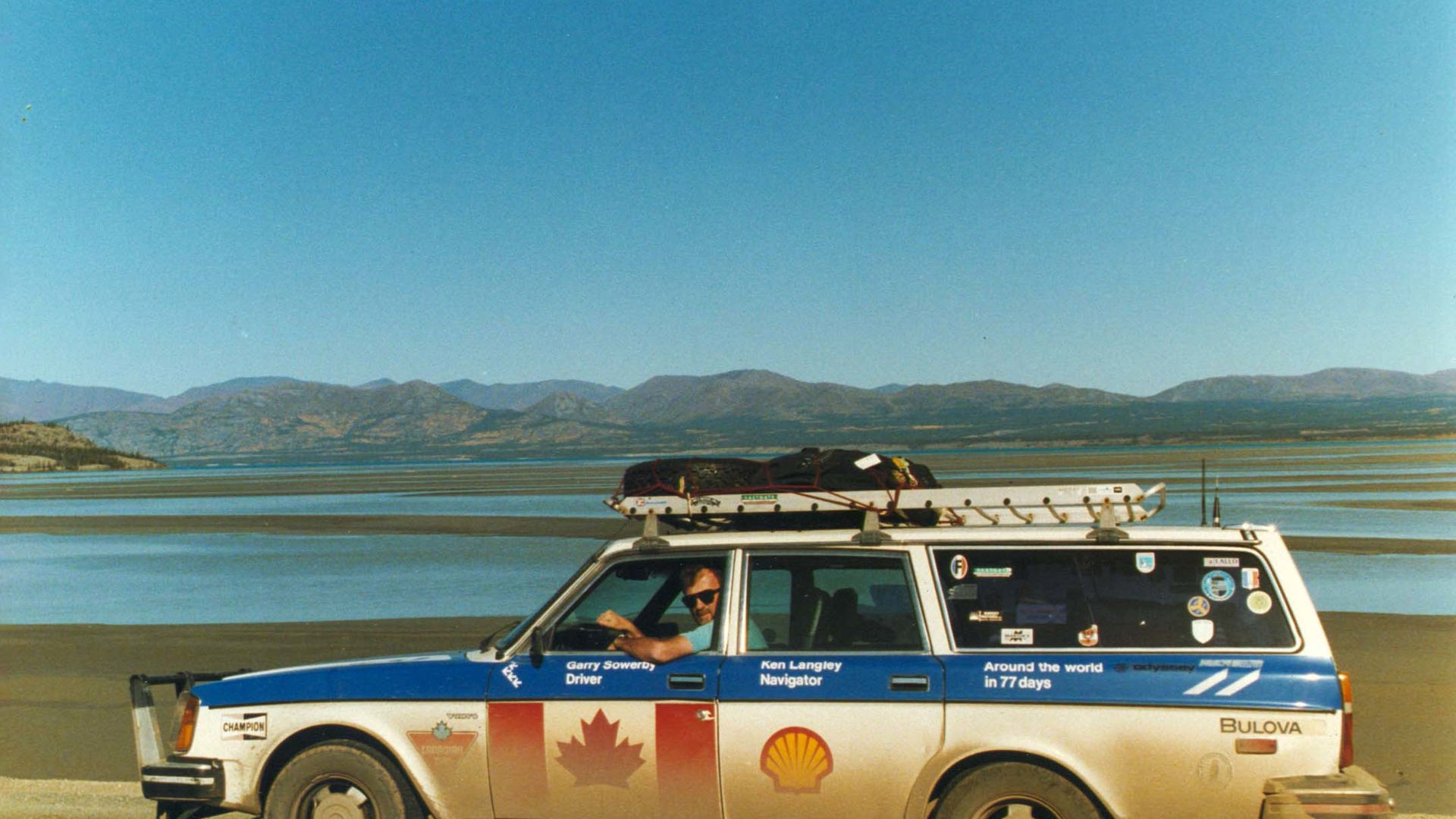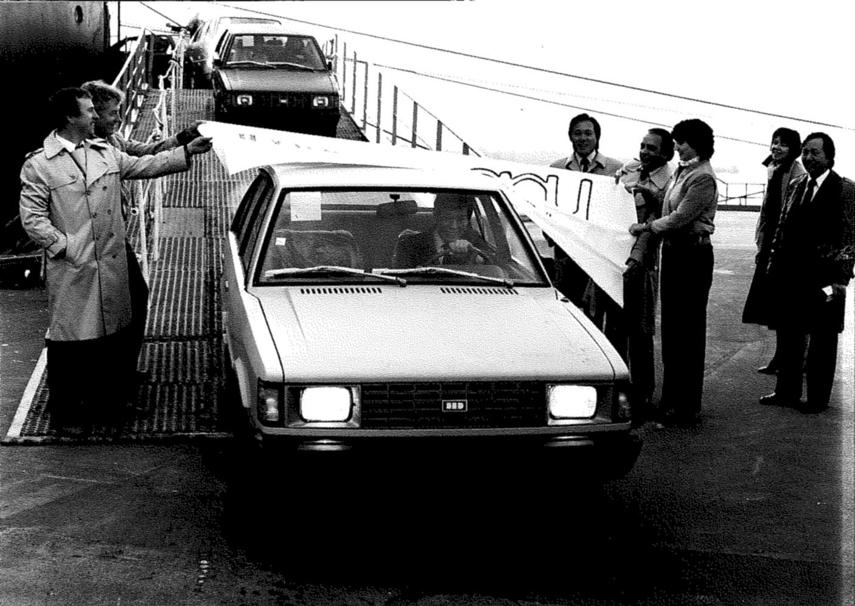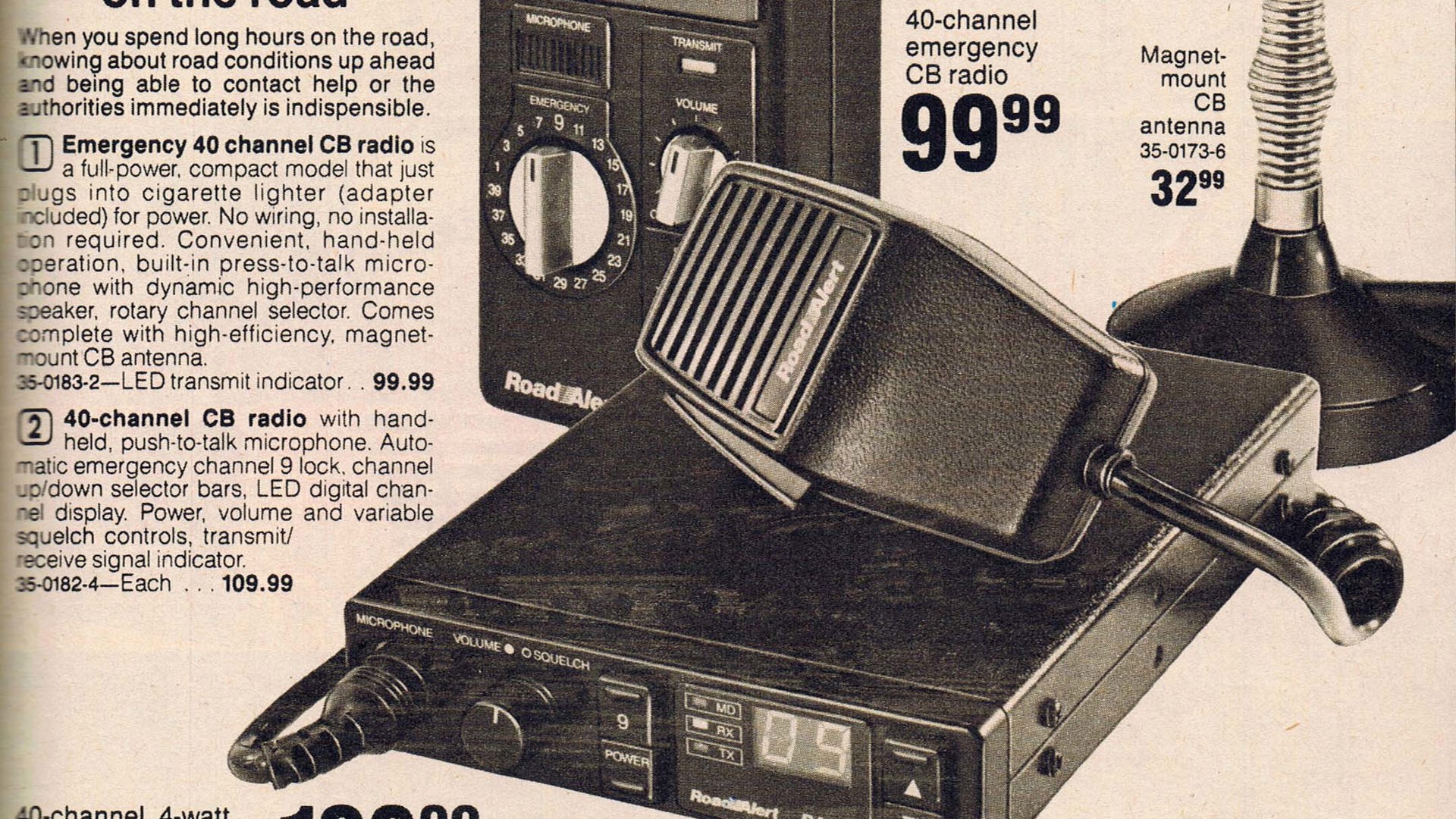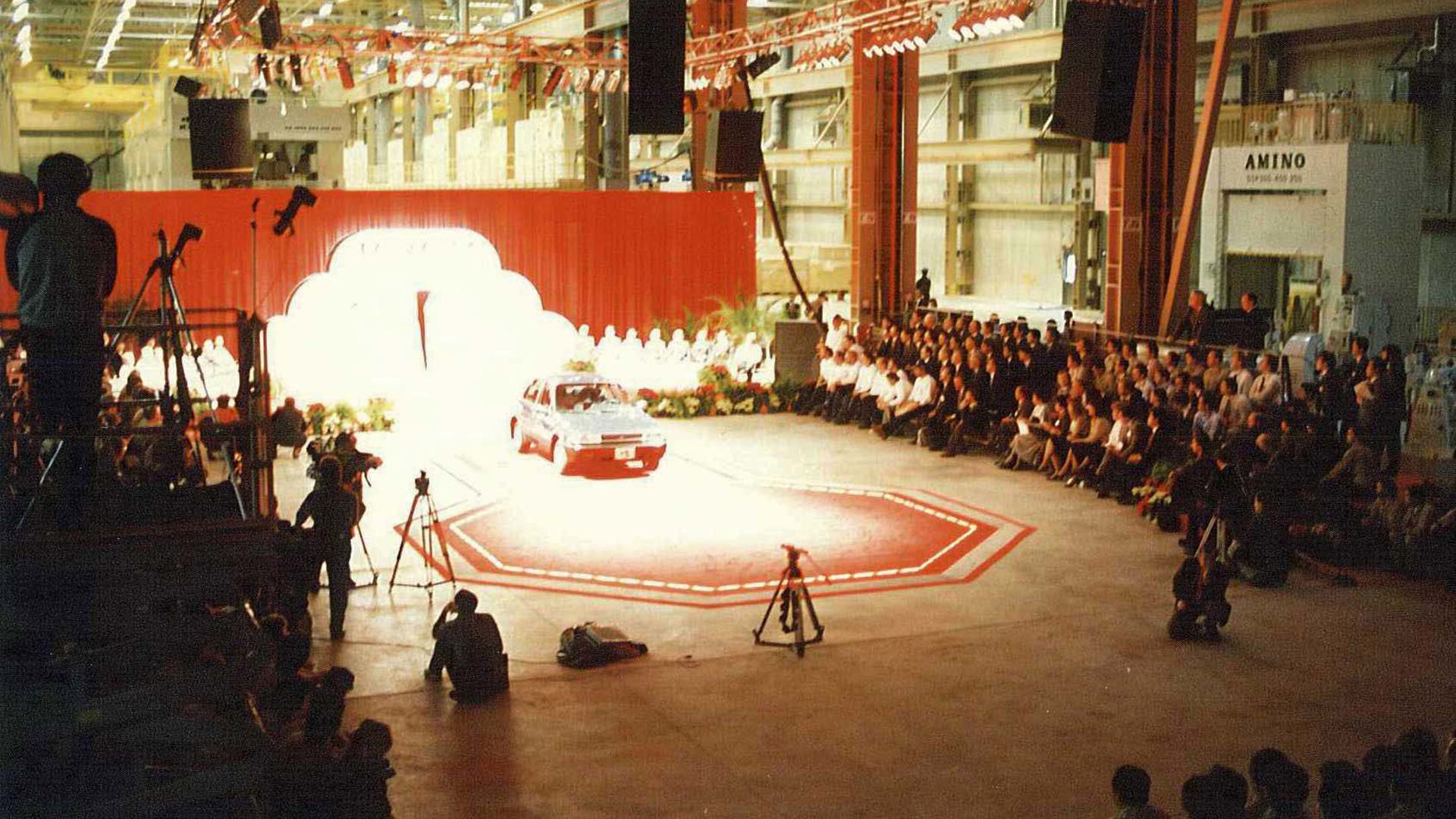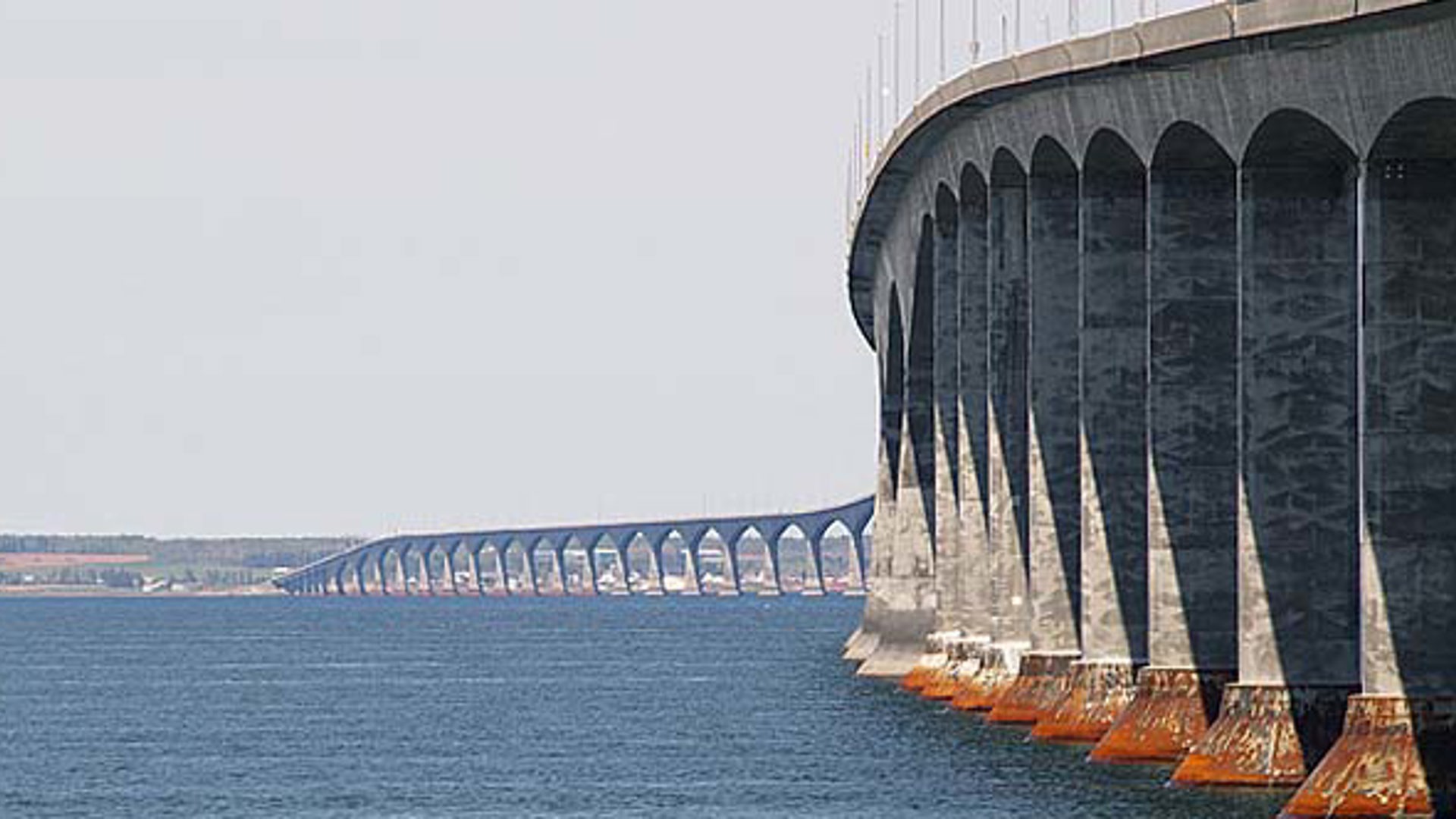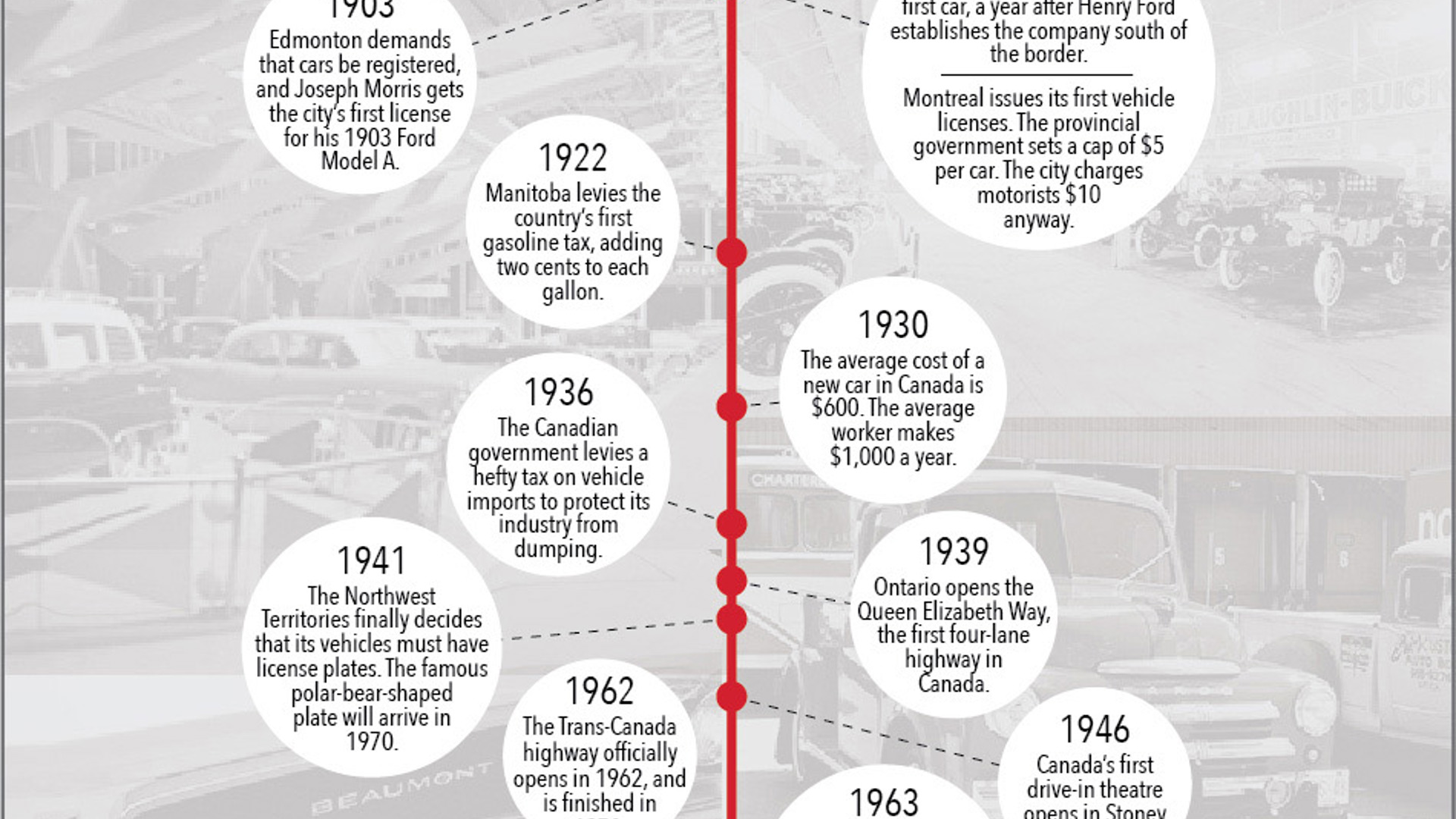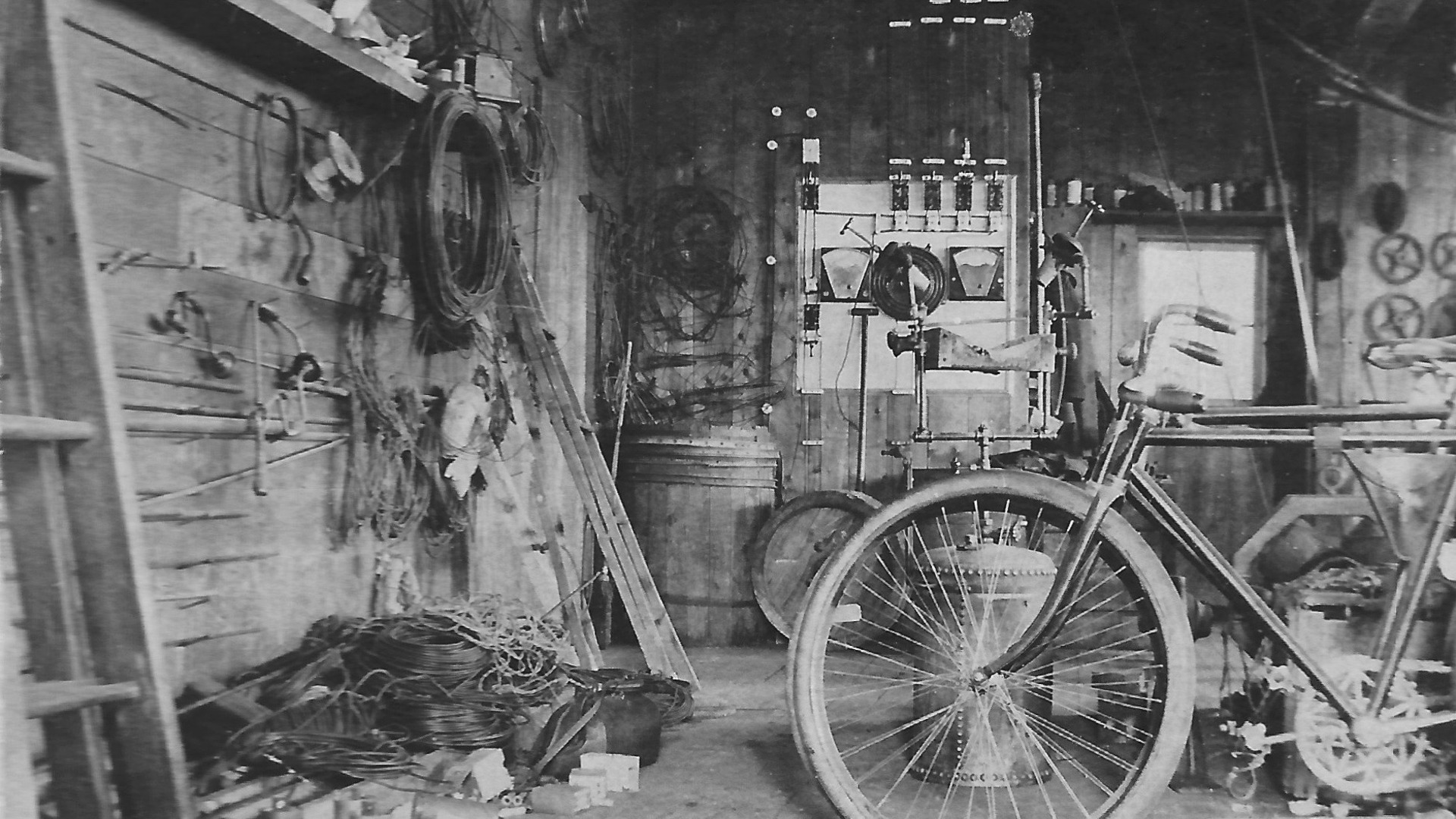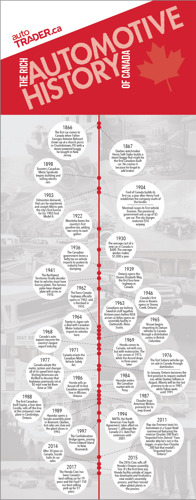Infographic by Valerie Mattocks. Images by Jil McIntosh; courtesy City of Toronto Archives, manufacturers
July 1, 2017 marks the sesquicentennial anniversary of Canadian Confederation. But did you know the history of cars in the Great White North goes back even earlier? (Well, just a little.)
1866
The first car comes to Canada when Father Georges-Antoine Belcourt shows up at a church picnic in Charlottetown, PEI with a steam-powered buggy he bought in New Jersey. Rather than bask in its historic automotive glory, PEI will ban cars in 1908 for more than a decade.
1867
Quebec watchmaker Henry Seth Taylor builds a steam buggy that might be the first Canadian-built car. He’s a little absent-minded, and crashes it because he forgot to add brakes. He then stashes it in a barn, where it stays for almost a century before it’s found and restored.
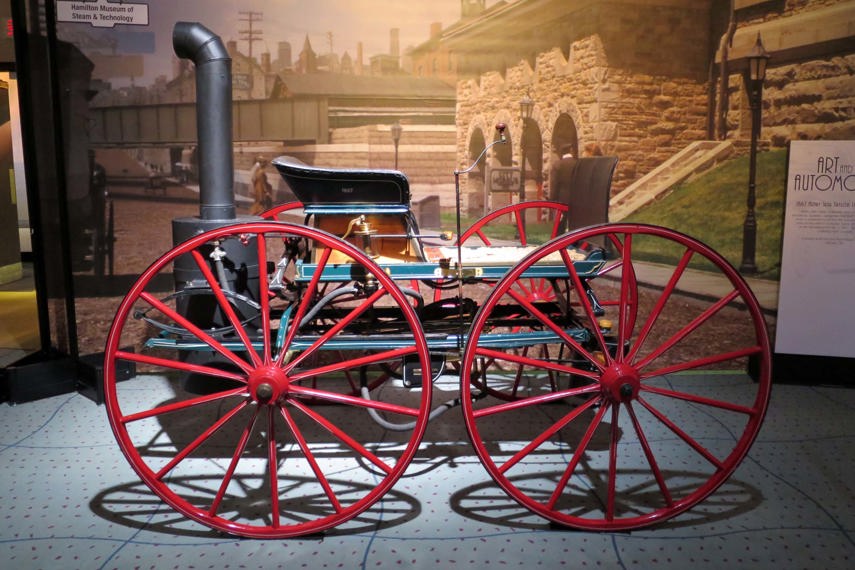 Henry Seth Taylor's 1867 Buggy
Henry Seth Taylor's 1867 Buggy
1893
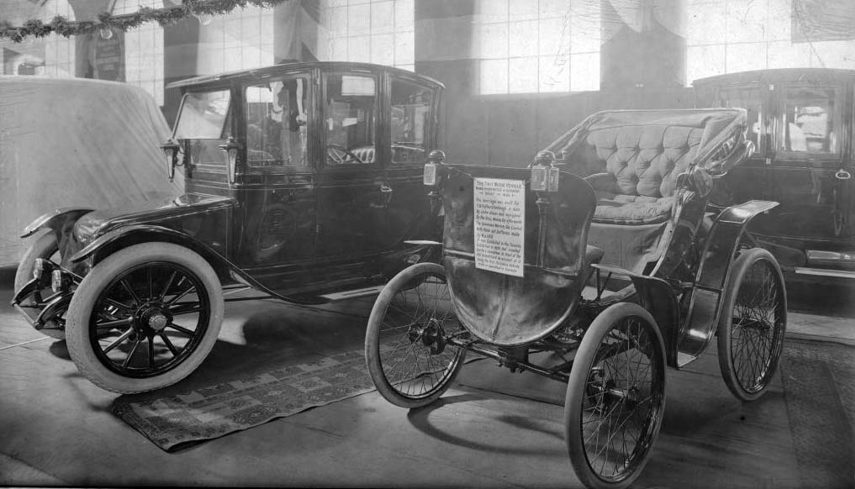 Frederick Featherstonehaugh's electric car and first motor vehicle built in Canada at auto show, Armouries.
Frederick Featherstonehaugh's electric car and first motor vehicle built in Canada at auto show, Armouries.
Toronto lawyer Frederick Featherstonhaugh commissions a local company to create an electric buggy, becoming the first Canadian to have a car built for him. We’re not sure if he went for the rustproofing and extended warranty.
1897
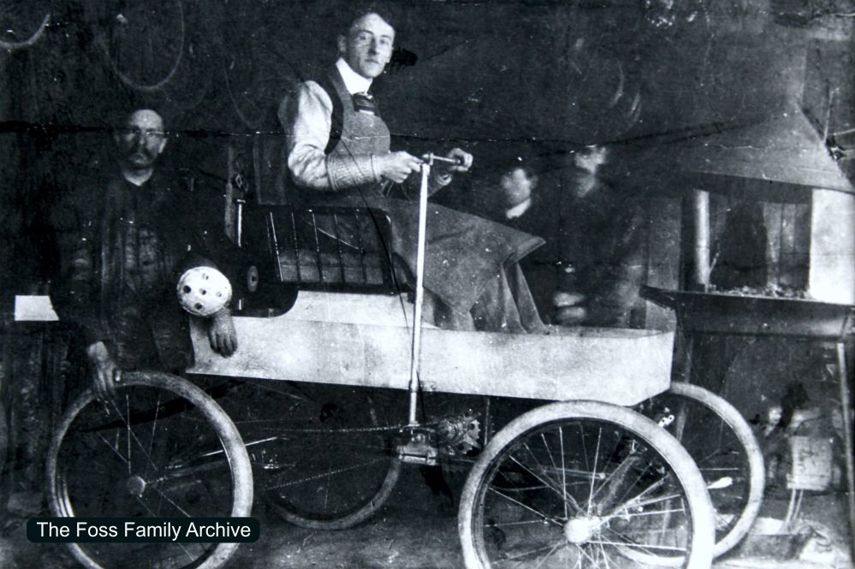
George Foote Foss, of Sherbrooke Quebec builds Canada's first gasoline powered automobile. The Fossmobile was capable of speeds up to 24 km/h courtesy of a four horsepower engine. That engine was mounted at the front of the car and drove the rear wheels by a chain. After turning down opportunities to build the car on a large scale with Ford, the Fossmobile was sold in 1902 for $75.
1898
Using Featherstonhaugh’s design as its base, Toronto’s Canadian Motor Syndicate begins building and selling electric cars.
1903
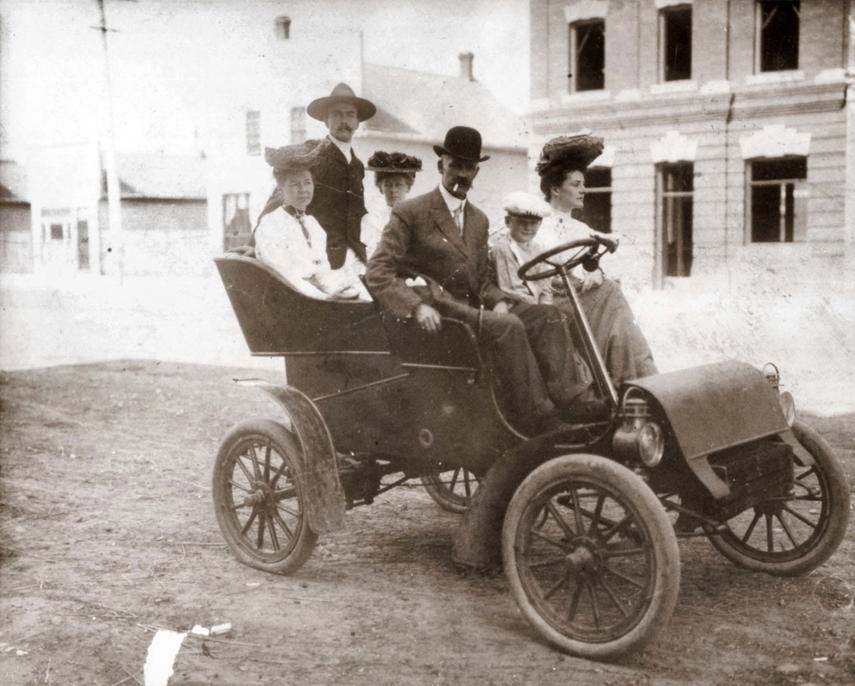 The Morris family enjoying an open-air drive along Jasper Avenue in the first car registered in Alberta.
The Morris family enjoying an open-air drive along Jasper Avenue in the first car registered in Alberta.
Edmonton demands that cars be registered, and Joseph Morris gets the city’s first licence for his 1903 Ford Model A. Drivers have to put their own numbers on their cars, and Morris gets a ticket for not doing so. He claims a broomstick stuck in the back forms the number 1, and he’s off the hook. Nine years later, he’s issued Alberta’s first provincially made plate.
1904
Ford of Canada builds its first car, a year after Henry Ford establishes the company south of the border. Windsor-area wagon builder Gordon McGregor saw promise in Ford’s horseless carriage, and exchanged half his company in return for the licence to build the cars and sell them throughout the British Empire. Canada builds its one millionth Ford in 1931.
Montreal issues its first vehicle licences. The provincial government sets a cap of $5 per car. The city charges motorists $10 anyway.
1907
Vancouver becomes the first Canadian city to buy a firetruck, but since early vehicles aren’t always reliable, it still keeps its horses for another 10 years.
1907
Canada’s first gas station and possibly the world’s first, according to Imperial Oil opens in Vancouver. Up until now, motorists usually buy their fuel at pharmacies or hardware stores.
1908
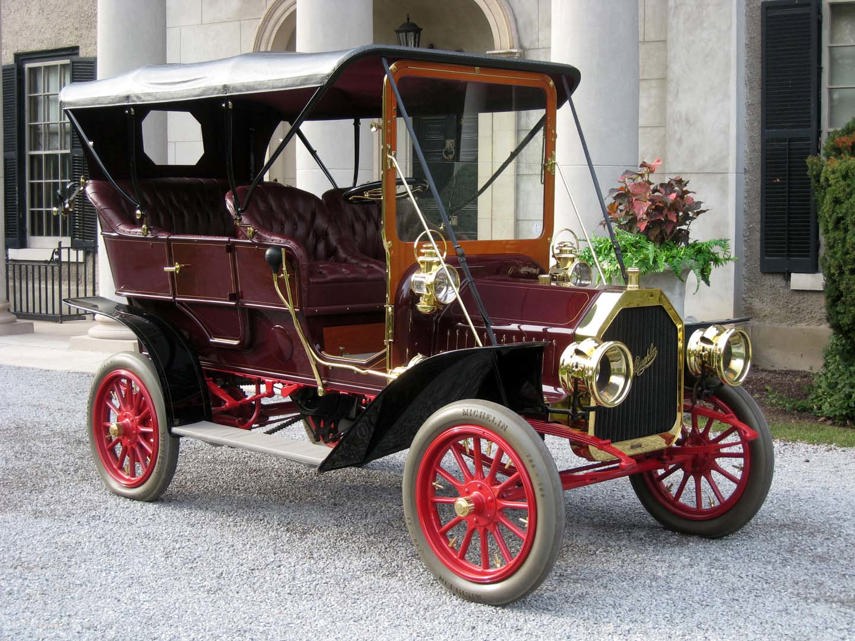 1908 McLaughlin-Buick
1908 McLaughlin-Buick
Ontario-based automakers McLaughlin and Russell, among the country’s largest, get into an advertising war over who makes the better car. McLaughlin eventually becomes General Motors of Canada. Russell eventually becomes closed.
1909
Bell Canada buys its first motorized vehicle, an Ontario-built Tudhope, on April 11. When an employee comes to pick it up, Tudhope first teaches him how to drive. The engine blows up on the way home. Someone is sent to rescue him sometime between 9 am and 3 pm
1911
The T. Eaton department store sells cars through its catalogues, until it discovers that early-car reliability doesn’t really mesh well with its “Goods satisfactory or money refunded” policy.
1912
Thomas Wilby and F.V. Haney become the first to drive from Halifax to Vancouver. It’s a tough trip because there are few roads, and Canadians lobby for a Trans-Canada highway. The federal government gets right on it. The highway officially opens in 1962, and is finished in 1970.
1913
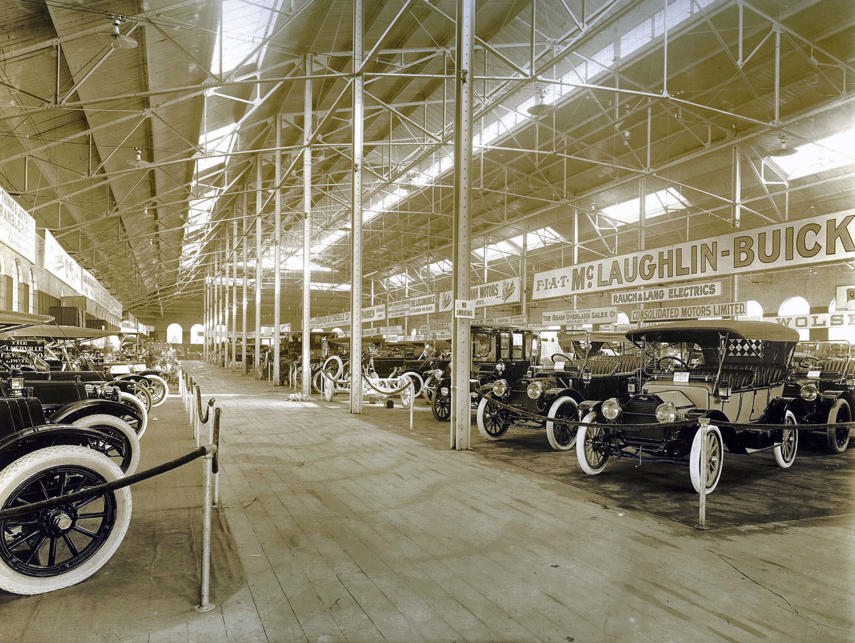 The 1913 auto show in Toronto's Transportation Building. Canadian manufacturers include McLaughlin-Buick, Galt, and Russell, along with such American ones as Overland, Locomobile, Cadillac, and electric car builder Rauch & Lang.
The 1913 auto show in Toronto's Transportation Building. Canadian manufacturers include McLaughlin-Buick, Galt, and Russell, along with such American ones as Overland, Locomobile, Cadillac, and electric car builder Rauch & Lang.
Since the Model T’s drive levers make it tough to get in on the driver’s side, Ford’s US plants save money by not putting a door there. But since some of Canada’s production goes to Commonwealth countries that need right-hand drive, our cars get two doors; a quick way to spot a Canadian-built Model T at car shows today.
1918
Canada’s auto industry is the world’s second-largest, after the United States, and will hold that title to 1923.
1922
Manitoba levies the country’s first gasoline tax, adding two cents to each gallon. Pooh.
1925
Chrysler builds its first car in Canada. Not unexpected, since the company grew out of two US automakers, Maxwell and Chalmers, which already had factories in Ontario.
1928
Prince Edward Island becomes the first province to put a slogan on its licence plates, adopting the snappy “Seed Potatoes and Foxes.”
1930
The average cost of a new car in Canada is $600. That sounds fantastic, until you realize the average worker only makes $1,000 a year.
1936
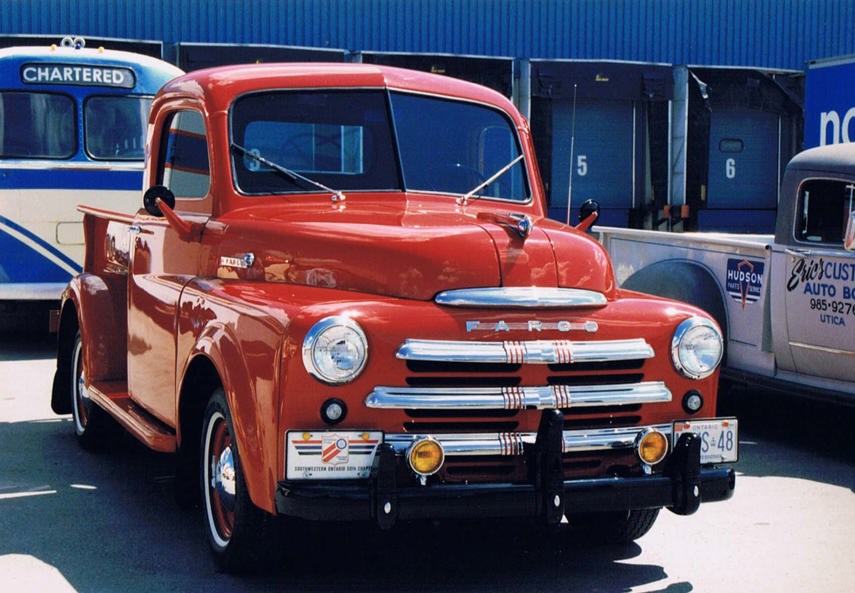 1948 Fargo Truck
1948 Fargo Truck
The Canadian government levies a hefty tax on vehicle imports to protect its industry from dumping. American automakers take their models, slap on some special trim, and sell them as Canadian cars to get around it. Americans will give strange looks to those driving their Beaumonts, Meteors, and Fargo trucks across the border for years to come.
1939
Ontario opens the Queen Elizabeth Way, the first four-lane highway in Canada.
1941
The Northwest Territories finally decides that its vehicles must have licence plates. The famous polar-bear-shaped plate will arrive in 1970.
1946
Canada’s first drive-in theatre opens in Stoney Creek, Ontario.
1949
Canada’s first self-serve gas station opens in Winnipeg. Frostbitten station attendants cheer.
1952
Volkswagen of Canada opens its doors, three years ahead of its American counterpart. Punch-buggy that!
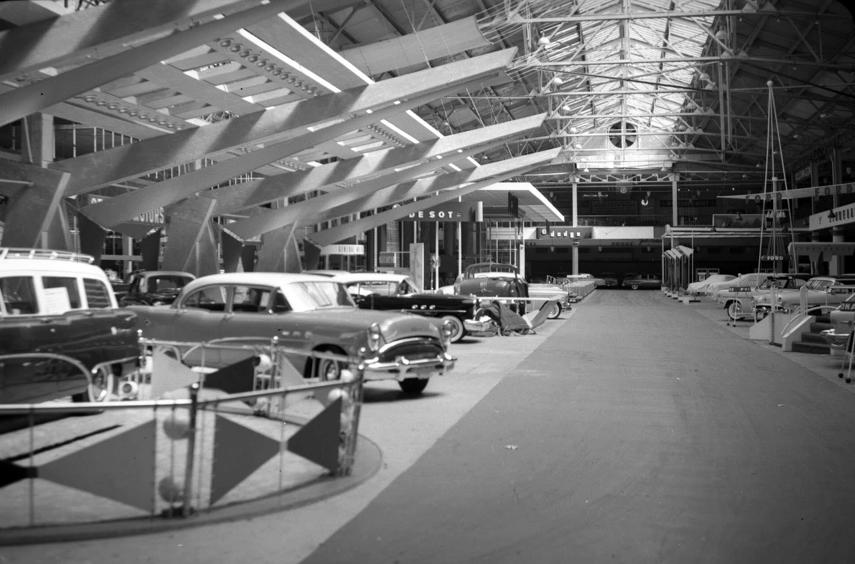 General Motors, Chrysler and Ford get their displays ready in the Automotive Building at the CNE for the 1954 show.
General Motors, Chrysler and Ford get their displays ready in the Automotive Building at the CNE for the 1954 show.
1963
Volvo opens an assembly facility in Dartmouth, Nova Scotia, and then runs a larger one in Halifax from 1967 to 1998. Canadians are bolting Swedish stuff together thirteen years before IKEA arrives.
Cash-strapped Studebaker closes its Indiana plant, transferring production to its newer and more efficient factory in Hamilton, Ontario. Canada is now the only place Studebakers are made.
1964
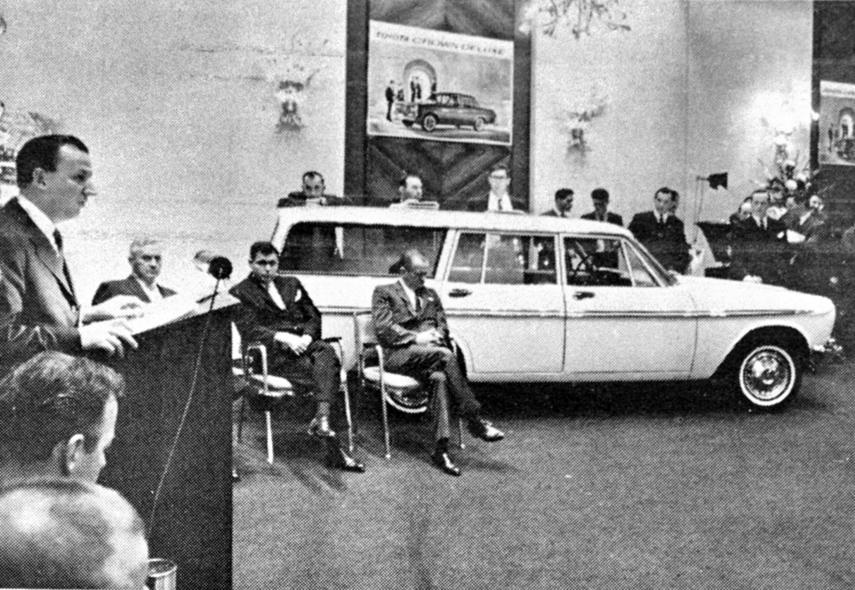 Toyota announces in 1964 that it will come to Canada next year
Toyota announces in 1964 that it will come to Canada next year
Toyota in Japan cuts a deal with Canadian Motor Industries to import its vehicles here. Only 755 are sold in 1965, but the company soldiers on, and the partnership will later become Toyota Canada.
1965
Nissan begins importing its Datsun vehicles to Canada through a distribution centre in British Columbia.
Canada and the US sign the Auto Pact, letting newly manufactured cars and parts cross the border without duty. Canadians wipe away tears as their beloved Beaumonts, Meteors, and Fargo trucks eventually drive off into the sunset.
1966
Since it runs only its Ontario plant, Studebaker is considered a Canadian automaker and can import vehicles duty-free. To raise vitally needed funds, it signs a deal to buy VWs from Germany and sell them to Volkswagen Canada for less than the duty that would otherwise be levied. But it isn’t enough, and Canada builds the last Studebaker in March.
1968
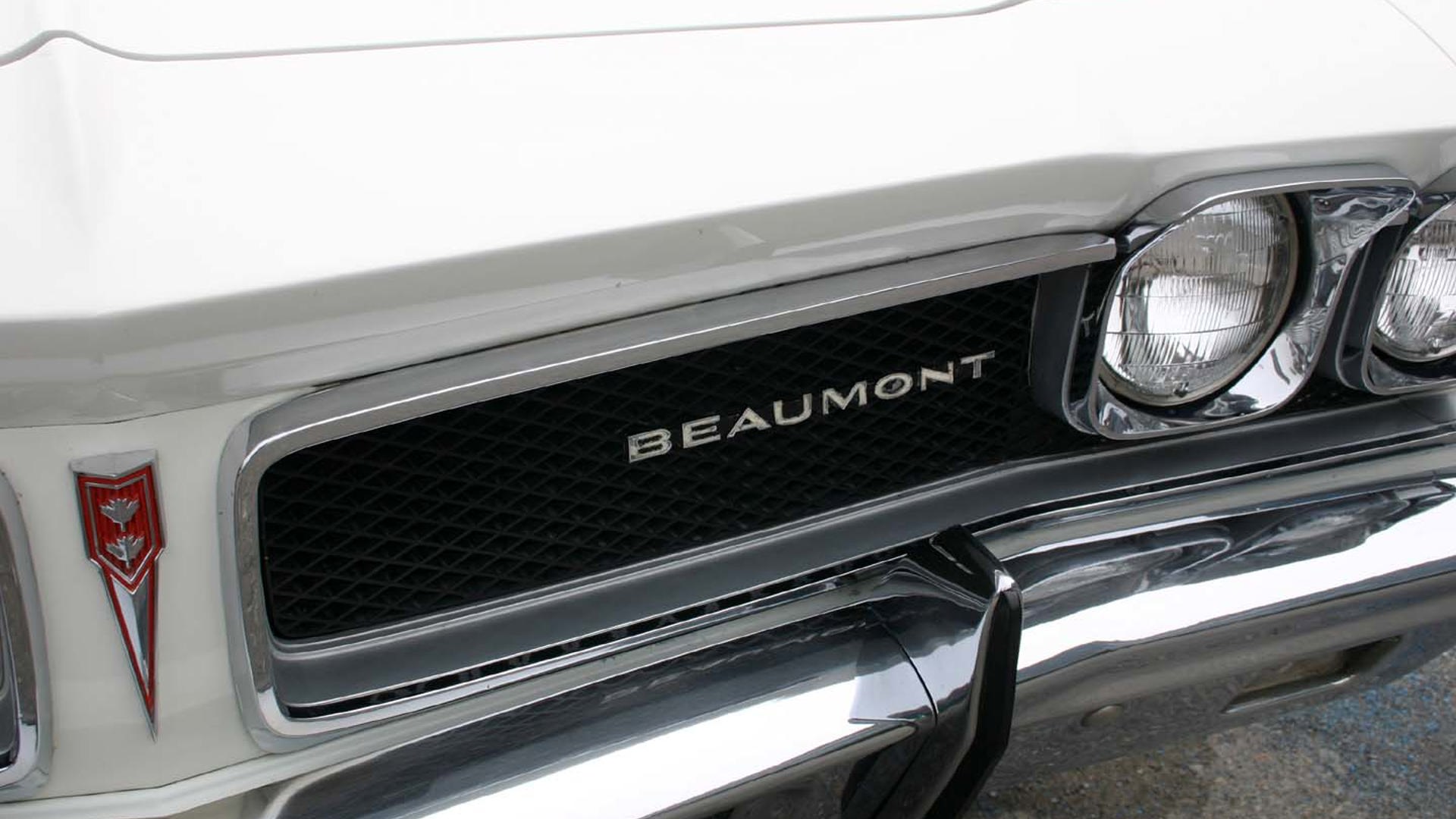
Canada’s auto exports reach $2.6 billion, soaring past the pulp and paper industry to become the country’s largest export industry. Take that, trees!
Mazda opens a distribution office in British Columbia to bring its cars into Canada.
1969
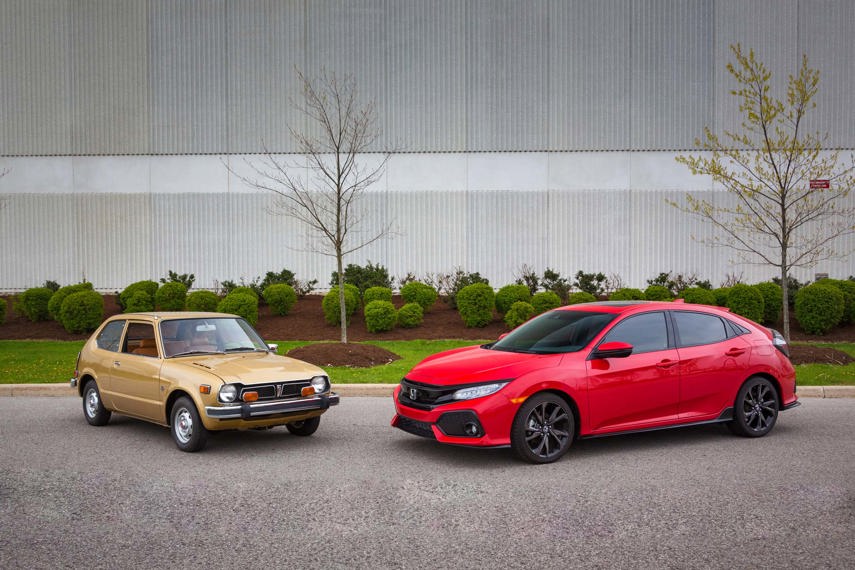 The 2-Millionth Honda Civic sold in Canada, in 2017, with a 1973 version
The 2-Millionth Honda Civic sold in Canada, in 2017, with a 1973 version
Honda comes to Canada, not with cars, but with motorcycles. The Civic arrives in 1973, while the Accord drops in three years later.
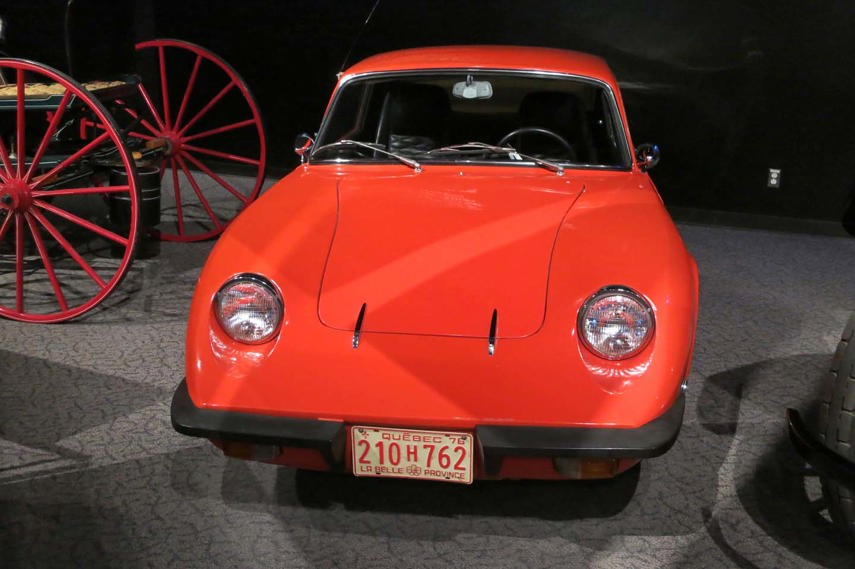 1971 Manic GT
1971 Manic GT
Jacques About builds a Renault-powered fiberglass sports car called the Manic GT in Granby, Quebec. It can reach over 200 km/h and is competitively priced, but an unsteady supply of Renault components will shutter it in 1971 after 160 are built.
1971
After Ralph Nader’s book, Unsafe at Any Speed, prompts the US to tighten vehicle standards, Canada enacts the Canadian Motor Vehicle Safety Act.
1974
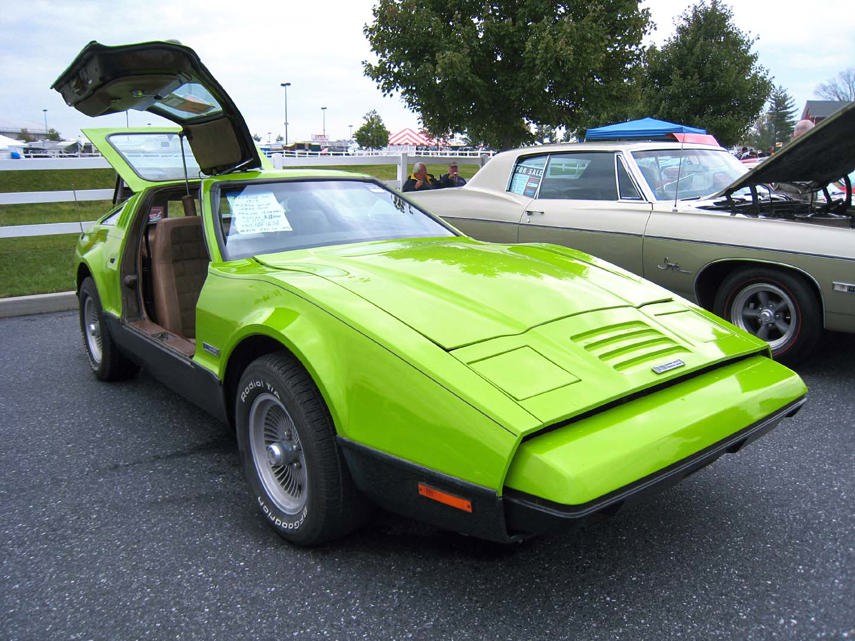 1975 Bricklin SV-1
1975 Bricklin SV-1
American entrepreneur Malcolm Bricklin wants to build a gull-winged sports car bearing his name, and he talks New Brunswick into funding the factory. The experimental cars suffer production problems, and costs soar. Worse, Canadians can’t buy ’em: Bricklin sells them to his US distribution company for less than they cost to build, with New Brunswick picking up the difference. Premier Richard Hatfield finally calls a halt after 2,875 cars and $23 million.
1976
The first Subaru vehicles go on sale in Canada through distributors. The company will go on to create Subaru Canada in 1989, the same year it opens its first US factory in Indiana.
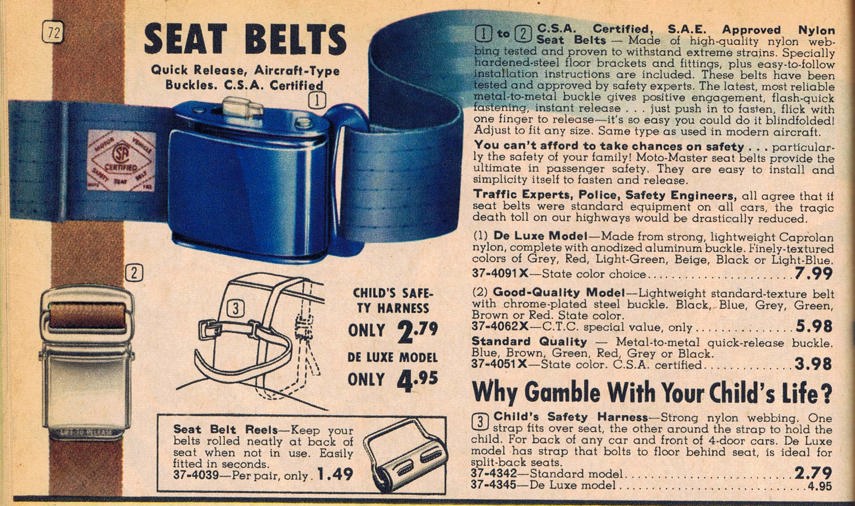 Aftermarket seatbelts for cars that aren't equipped
Aftermarket seatbelts for cars that aren't equipped
In January, Ontario becomes the first province to require seatbelt use, while Quebec follows in August. Alberta will be the last province to do so in 1987, while Yukon waits until 1991.
1977
Canada adopts the metric system and changes all of its speed limit signs. Visiting Americans are thrilled to discover that highways previously set at 60 mph now let them drive at 100.
1980
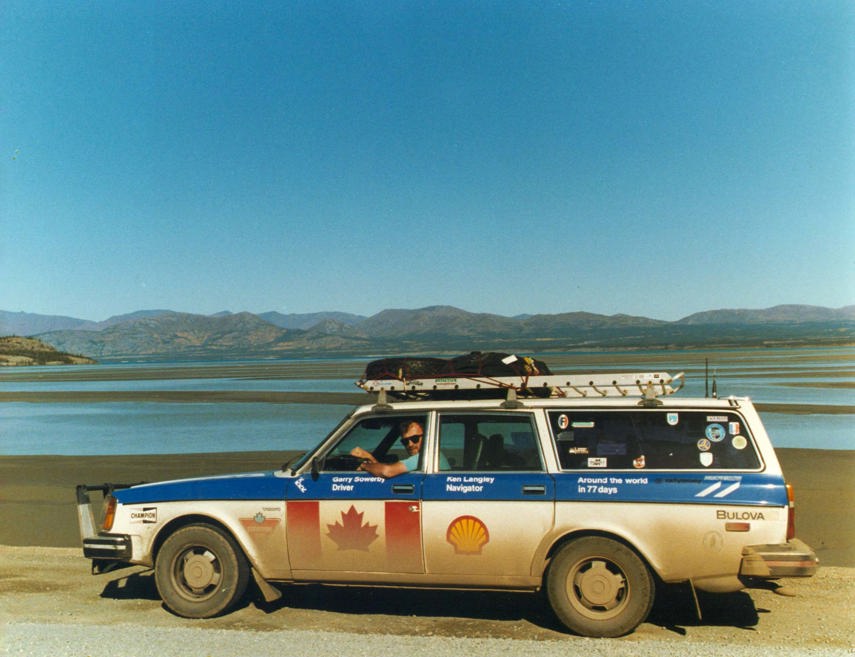 Garry Sowerby and Ken Langley take a Volvo around the world in 1980
Garry Sowerby and Ken Langley take a Volvo around the world in 1980
Canadians Garry Sowerby and Ken Langley take a Canadian-assembled Volvo DL station wagon to the foot of the CN Tower in Toronto on September 6. They return to the same spot on November 19, setting a time record after driving around the world.
1981
Following a similar agreement with the US, Japan agrees to voluntarily limit its vehicle exports to Canada to protect the Canadian auto industry. The agreements in both countries will lead to Japanese automakers building factories here.
1984
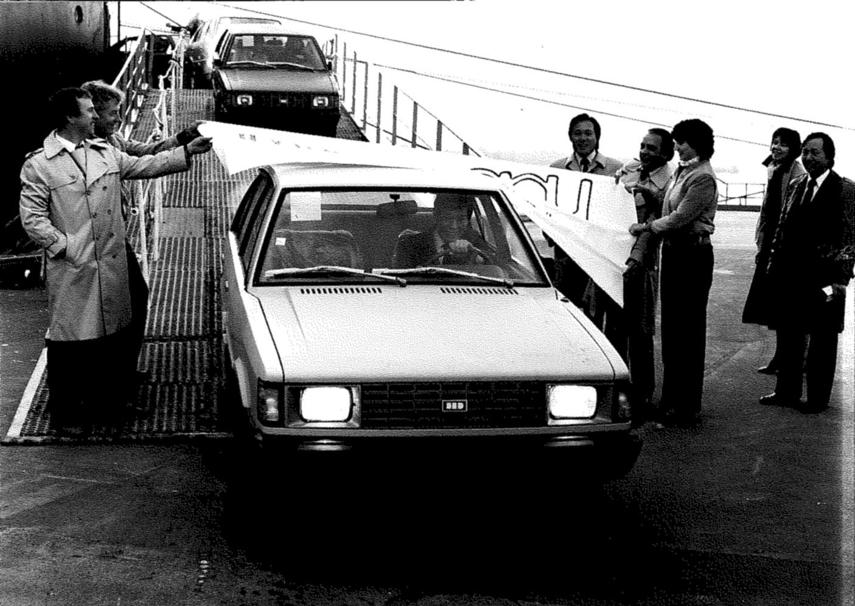
Hyundai enters the Canadian market with its Pony. It’s noisy and underpowered, but it’s almost as cheap as a bus pass and soars to the top of the sales charts. Hyundai doesn’t open stateside for two more years. Canadians get weird looks driving their Ponies (Ponys?) across the border, but we’re used to that by now.
Unionized Canadian auto workers worry that their US counterparts are conceding too much to avoid layoffs in an economy that differs significantly from Canada’s. They split away from the UAW, and the following year, form the CAW.
1985
Toyota begins making wheels in Delta, BC, its first Canadian operation. Since it doesn’t yet make anything here to put them on, it initially ships the wheels back to its plants in Japan.
1986
Honda rolls an Accord off its first Canadian assembly line in Alliston, Ontario. It will build two more plants in 1998 and 2008.
1987
Chrysler buys American Motors, primarily for its Jeep brand. The deal also gives it a brand-new AMC plant in Brampton, Ontario, which will later be the only North American factory building the rear-wheel-drive Dodge Charger, Magnum and Challenger, and Chrysler 300.
1988
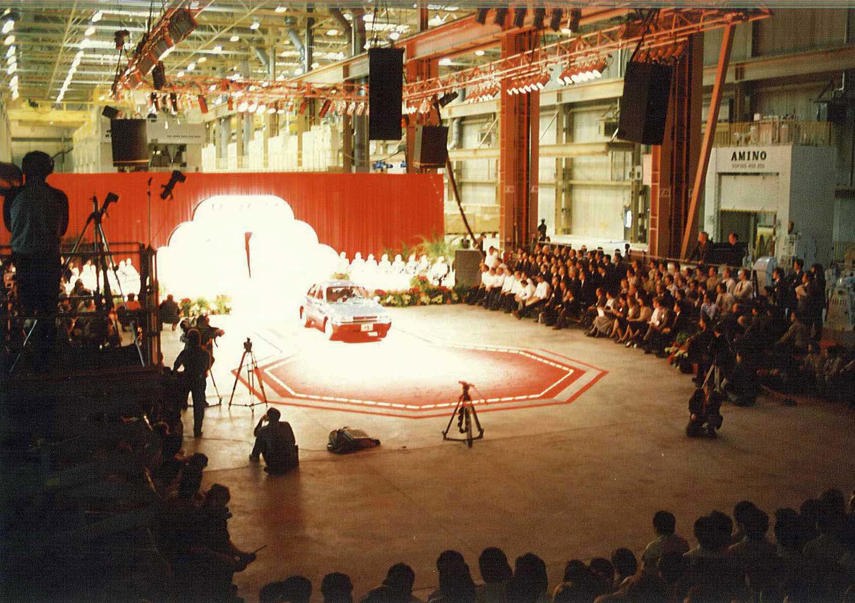
The first Canadian-built Toyota, a four-door Corolla, rolls off the line (on British Columbian wheels!) at the company’s new plant in Cambridge, Ontario.
1989
Hyundai opens a Sonata assembly plant in Bromont, Quebec, but sales are slow and the plant closes in 1993. Quebecers Je me souviens the job losses for many years.
1994
NAFTA, the North American Free Trade Agreement, takes effect on January 1, although the Canada-US Auto Pact continues until 2001. Canadians and Mexicans now get funny looks when they drive their cars into the United States.
1997
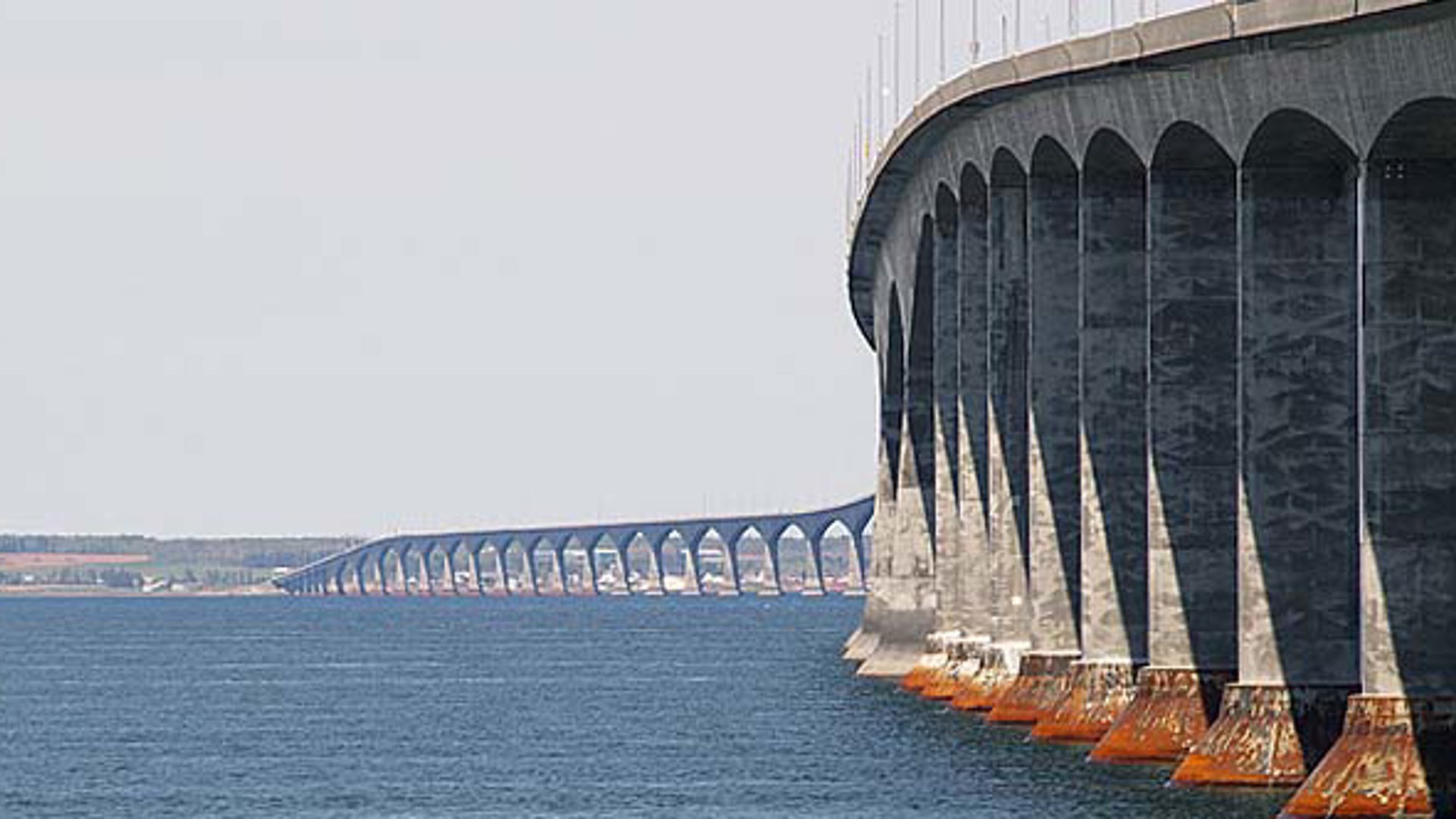
The Confederation Bridge opens, joining Prince Edward Island to New Brunswick. Good thing cars are now allowed on the island!
2002
GM closes its 36-year-old plant in St. Thérèse, Quebec, which built the Buick Skylark, Chevrolet Camaro, and Pontiac Firebird. Quebecers Je me souviens once again.
2003
Toyota’s plant in Cambridge, Ontario becomes the first factory outside of Japan to build Lexus vehicles when the first RX 300 rolls off the assembly line in September.
2011
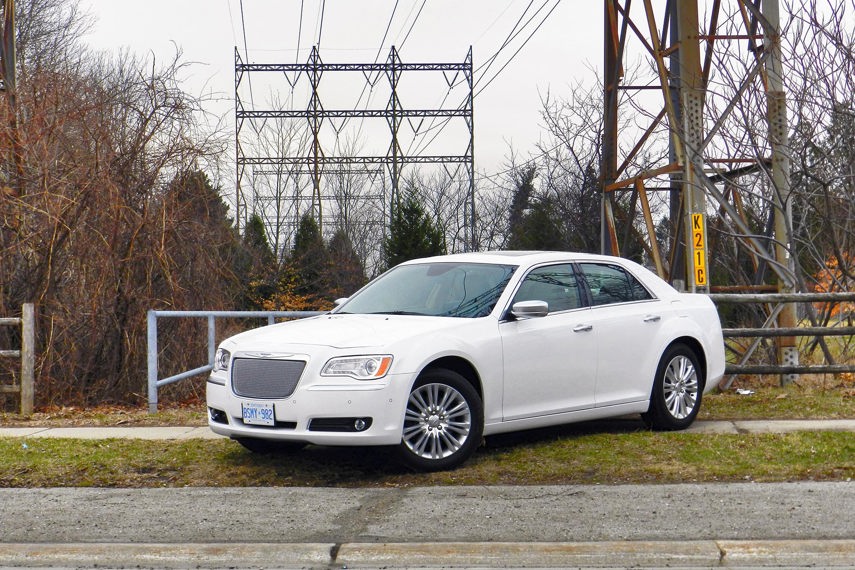
Rap star Eminem touts his hometown in a Super Bowl commercial featuring the midsize Chrysler 200 that’s “Imported from Detroit.” Fans wonder why he’s not in the bigger, in-your-face Chrysler 300 but that model’s “Imported from Ontario.”
2014
After 30 years in Canada, including building vehicles in Ontario in conjunction with GM, Suzuki halts its car sales.
2015
 The 2016 Honda Civic rolls off Honda’s Ontario assembly line. It’s the first time any Honda facility outside of Japan has developed and finalized a new model’s assembly process, and then trained other global plants in the process.
The 2016 Honda Civic rolls off Honda’s Ontario assembly line. It’s the first time any Honda facility outside of Japan has developed and finalized a new model’s assembly process, and then trained other global plants in the process.
2017
In honour of the country’s 150th birthday, autoTRADER.ca definitively outlines Canada’s automotive history.
